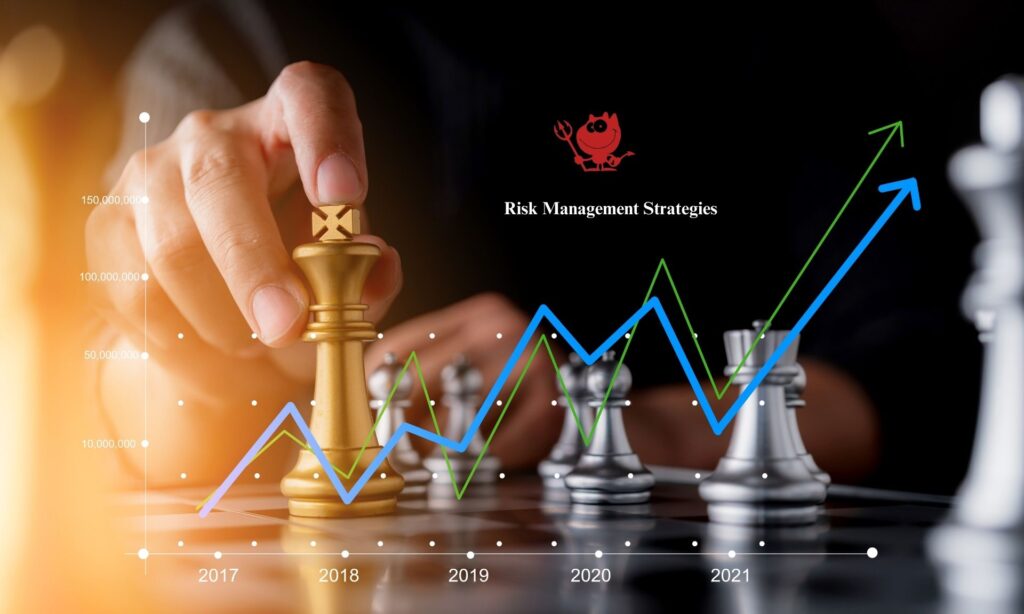Effective risk management is crucial for companies of all sizes in today’s volatile business landscape. From economic uncertainties to cybersecurity threats, businesses face a myriad of risks that can impact their financial stability and long-term success. This comprehensive guide explores essential risk management strategies to help protect your business assets and operations.
Understanding Financial Risks

Before diving into specific strategies, it’s important to understand the various types of financial risks businesses may encounter:
Market Risk: Fluctuations in market conditions that can affect asset values or investment returns.
Credit Risk: The potential for loss due to borrowers failing to repay debts.
Liquidity Risk: Difficulty in meeting short-term financial obligations due to lack of cash or easily convertible assets.
Operational Risk: Losses resulting from inadequate internal processes, systems, or external events.
Strategic Risk: Risks associated with poor business decisions or failure to adapt to changing market conditions.
Key Financial Risk Management Strategies
Diversification
One of the most fundamental financial risk management strategies is diversification. By spreading investments and resources across different asset classes, industries, and geographic regions, businesses can reduce their exposure to any single risk factor.
For small businesses, diversification might involve:
- Offering multiple products or services
- Expanding into new markets or customer segments
- Maintaining a diverse supplier base
- Investing company funds in a mix of stocks, bonds, and other assets
Larger corporations often implement more complex diversification strategies, such as:
- Operating in multiple countries or industries
- Engaging in mergers and acquisitions to expand their portfolio
- Utilizing financial instruments like futures and options to hedge against market risks
Risk Assessment and Analytics
Employing advanced risk assessment tools and analytics can significantly improve decision-making and risk mitigation efforts. Modern technology allows businesses to:
- Conduct thorough risk analyses using big data and AI-powered algorithms
- Develop predictive models to anticipate potential risks
- Perform scenario analysis to evaluate the impact of various risk events
For example, a manufacturing company might use predictive maintenance analytics to identify potential equipment failures before they occur, reducing operational risks and downtime.
Hedging Strategies
Hedging involves using financial instruments to offset potential losses in other investments or business activities. Common hedging strategies include:
- Forward contracts: Agreements to buy or sell an asset at a predetermined price on a future date
- Options: Contracts giving the right (but not obligation) to buy or sell an asset at a specific price
- Futures: Standardized contracts to buy or sell an asset at a future date
For instance, a company with significant foreign currency exposure might use currency forwards or options to protect against exchange rate fluctuations.
Insurance Coverage
Comprehensive insurance coverage is a critical component of risk management for businesses of all sizes. Key types of business insurance include:
- General Liability Insurance: Protects against third-party claims for bodily injury or property damage
- Property Insurance: Covers damage to business property from events like fire, theft, or natural disasters
- Professional Liability Insurance: Safeguards against claims of negligence or errors in professional services
- Cyber Insurance: Provides protection against data breaches and other cyber risks
- Business Interruption Insurance: Covers lost income due to unexpected events that disrupt operations
It’s essential to regularly review and update insurance policies to ensure adequate coverage as your business grows and evolves.
READ ALSO: Mitigating Risk in Option Trading: A Comprehensive Guide
Emergency Funds and Liquidity Management
Maintaining adequate liquidity and establishing emergency funds are crucial for managing unexpected financial shocks. This strategy involves:
- Setting aside a portion of revenue in easily accessible savings accounts
- Establishing lines of credit for quick access to funds when needed
- Implementing cash flow forecasting to anticipate future liquidity needs
- Developing contingency plans for various financial scenarios
During economic downturns or unexpected crises, businesses with strong liquidity positions are better equipped to weather the storm and maintain operations.
Robust Internal Controls and Compliance
Implementing strong internal controls and maintaining regulatory compliance can help mitigate operational and legal risks. Key aspects include:
- Developing clear policies and procedures for all business operations
- Regularly auditing financial statements and internal processes
- Providing ongoing training for employees on compliance and risk management
- Implementing checks and balances to prevent fraud or errors
- Staying up-to-date with relevant laws and regulations
For example, a healthcare provider might implement strict data privacy protocols to ensure compliance with HIPAA regulations and protect against potential data breaches.
Continuous Monitoring and Adaptation
Risk management is an ongoing process that requires constant vigilance and adaptation. Businesses should:
- Regularly review and update risk assessments
- Monitor key risk indicators (KRIs) to identify emerging threats
- Conduct post-mortem analyses of risk events to improve future responses
- Stay informed about industry trends and potential disruptors
By maintaining a proactive approach to risk management, businesses can quickly adapt to changing conditions and minimize potential losses.
Technology Integration for Risk Management
Leveraging technology can significantly enhance a company’s risk management capabilities. Consider implementing:
- Enterprise Risk Management (ERM) software to centralize risk data and reporting
- Automated compliance monitoring tools
- Cybersecurity solutions like firewalls, encryption, and multi-factor authentication
- Business intelligence platforms for real-time data analysis and decision-making
For instance, a financial services firm might use AI-powered fraud detection systems to identify and prevent suspicious transactions in real-time.
Supply Chain Risk Management
In today’s interconnected global economy, managing supply chain risks is crucial for many businesses. Strategies include:
- Diversifying suppliers to reduce dependency on any single source
- Conducting regular audits of supplier practices and financial health
- Implementing just-in-time inventory management to reduce excess stock
- Developing contingency plans for supply chain disruptions
For example, a manufacturer might maintain relationships with multiple suppliers in different geographic regions to mitigate the risk of natural disasters or geopolitical events affecting production.
Human Resource Risk Management
Employees can be both a source of risk and a key asset in risk management. HR risk management strategies include:
- Thorough background checks and screening processes for new hires
- Ongoing training and development programs to enhance employee skills and awareness
- Clear communication of company policies and expectations
- Succession planning for key positions
- Employee wellness programs to reduce health-related risks
By investing in their workforce, companies can reduce the likelihood of human errors, fraud, or other employee-related risks while also improving overall operational efficiency.
Conclusion
In an increasingly complex and interconnected business world, robust risk management strategies are essential for long-term success and stability. By implementing a comprehensive approach that includes diversification, advanced analytics, insurance coverage, and ongoing monitoring, businesses can better protect themselves against a wide range of potential threats.
Remember that risk management is not a one-time effort but an ongoing process that requires continuous attention and adaptation. As your business grows and evolves, so too should your risk management strategies. By staying proactive and leveraging the latest tools and techniques, you can build a resilient organization capable of weathering any storm and seizing new opportunities for growth.
Ultimately, effective risk management is about more than just avoiding losses—it’s about creating a foundation for sustainable success in an unpredictable world. By embracing these strategies and fostering a culture of risk awareness throughout your organization, you can position your business for long-term prosperity and peace of mind.
FAQs
Q: What is the difference between risk management and risk mitigation?
A: Risk management is the overall process of identifying, assessing, and addressing risks, while risk mitigation specifically refers to the actions taken to reduce the impact or likelihood of identified risks.
Q: How often should a business review its risk management strategies?
A: It’s recommended to review risk management strategies at least annually, or more frequently if there are significant changes in the business environment or operations.
Q: Can small businesses afford comprehensive risk management strategies?
A: Yes, many risk management strategies can be scaled to fit the needs and budgets of small businesses. The key is to prioritize the most critical risks and implement cost-effective solutions.
Q: What role does corporate culture play in risk management?
A: Corporate culture is crucial in fostering a risk-aware environment where employees at all levels are encouraged to identify and report potential risks, contributing to more effective overall risk management.
Q: How can businesses balance risk management with growth opportunities?
A: Effective risk management should not hinder growth but rather support it by allowing businesses to take calculated risks. The goal is to understand and mitigate risks, not eliminate them entirely.
In another related article, Top Financial Advisors and Wealth Management in St. Louis




